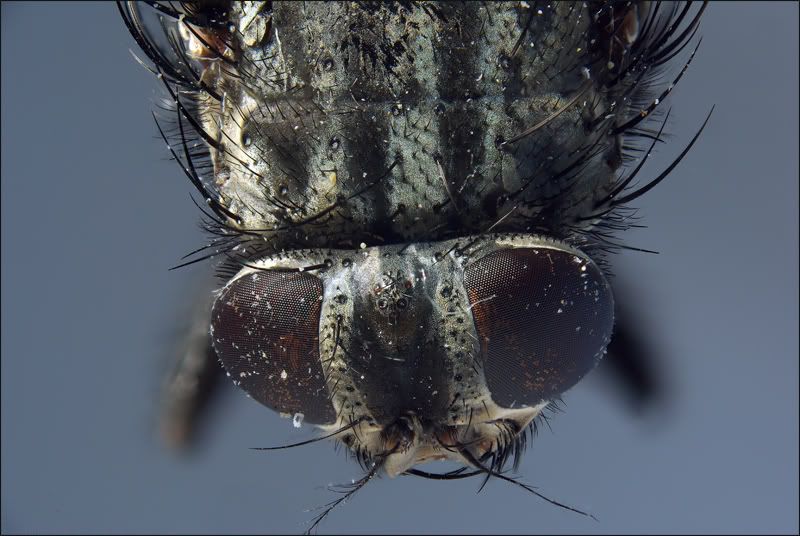The amount of expertise on this site is mind-blowing, it takes so long to try and absorb it all.
I'm in the middle of building a studio stacking setup and it's now at the point where I can actually use it with a bit of bodging. I'm not sure of the species of this fly. I found it behind a cupboard - it had obviously been there for a while, I need to read up on how to clean specimens, I know it looks pretty gross.

From memory I think it's about 30 images, stacked with Zerene. At the moment I use a Samsung GX10 with Sigma 105 and a reversed 50mm 1.7.
I know there's a million things wrong with this image, but it represents that 'progress!' moment for me from the extremely poor results I was getting previously. I haven't done any cleaning of the image as the fly is so dirty it didn't seem worthwhile
